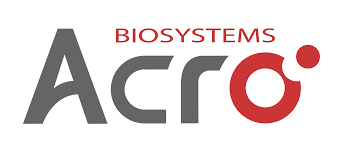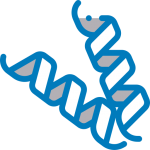
 Cynomolgus Latent TGF-beta 1 (C33S) Protein, His Tag
Cynomolgus Latent TGF-beta 1 (C33S) Protein, His Tag
TG1-C5243
1mg
Brand
ACROBiosystems
Description
Source :
Cynomolgus Latent TGF-Beta 1 (C33S), His Tag (TG1-C5243) is expressed from human 293 cells (HEK293). It contains AA Leu 30 – Ser 390 (C33S) (Accession # A0A2K5TJB2-1 (C33S)).
Molecule : Latent TGF-beta 1
Synonyms : Latent TGF-beta 1,Latent TGFB1,TGFB1,CED,DPD1,LAP,TGF-beta-1,TGFB
Format : Powder
Category : Cytokines&Growth Factors
Accession : N/A
Storage : -20℃
Shipping condition : Powder,RT
Molecular Weight : 43.1 kDa
Characteristics :
This protein carries a polyhistidine tag at the N-terminus. The precursor proprotein is partially cleaved by FURIN to form mature Transforming growth factor beta-1 (TGF-beta-1) and Latency-associated peptide (LAP) chains with calculated MW of 12.8 kDa and
Endotoxin Level : Less than 1.0 EU per μg by the LAL method.
Buffer : PBS, pH7.4
Description :
Transforming growth factor beta 1 ( TGFB1) is also known as TGF-β1, CED, DPD1, TGFB. is a polypeptide member of the transforming growth factor beta superfamily of cytokines. It is a secreted protein that performs many cellular functions, including the control of cell growth, cell proliferation, cell differentiation and apoptosis. The TGFB1 protein helps control the growth and division (proliferation) of cells, the process by which cells mature to carry out specific functions (differentiation), cell movement (motility), and the self-destruction of cells (apoptosis). The TGFB1 protein is found throughout the body and plays a role in development before birth, the formation of blood vessels, the regulation of muscle tissue and body fat development, wound healing, and immune system function. TGFB1 is particularly abundant in tissues that make up the skeleton, where it helps regulate bone growth, and in the intricate lattice that forms in the spaces between cells (the extracellular matrix). Within cells, this protein is turned off (inactive) until it receives a chemical signal to become active. TGFB1 plays an important role in controlling the immune system, and shows different activities on different types of cell, or cells at different developmental stages. Most immune cells (or leukocytes) secrete TGFB1. TGFB1 has been shown to interact with TGF beta receptor 1, LTBP1, YWHAE, EIF3I and Decorin.
References :
(1) Ghadami M, et al., 2000, Am. J. Hum. Genet. 66 (1): 143–7.
(2) Assoian R, et al., 1983, J Biol Chem , 258 (11): 7155–60.
(3) Derynck R, et al., 1985, Nature 316 (6030): 701–5.
(4) Letterio J, Roberts A, 1998, Annu Rev Immunol 16: 137–61.
Application
Reactivity



